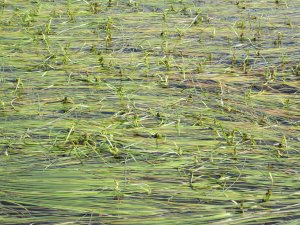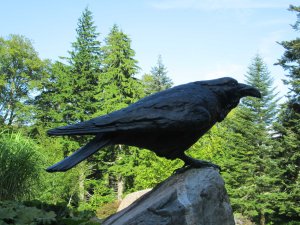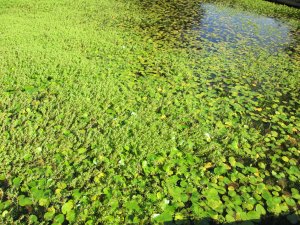The Sunday before last I visited some unrecorded tetrads and had more fun than I expected. See here. This Sunday I decided to try the next one to the south and its neighbour to the east. The first had only one species recorded in it apart from a few I recorded a week back, Diphasiastrum alpinum (Alpine Clubmoss), and in fairness it is everywhere – the dominant plant in some areas. However, it also had a selection of interesting species, some of which unsurprisingly were the same as the previous week’s goodies such as Alchemilla alpina (Alpine Lady’s-mantle), Saxifraga aizoides (Yellow Saxifrage) and Saxifraga stellaris (Starry Saxifrage).
However, it also had Luzula spicata (Spiked Wood-rush) which is a new 10km square record except for an anonymous undated record that is just given as NG43 (the ten kilometre square). What is more I found a new site for Eriocaulon aquaticum (Pipewort), indeed a new tetrad, but not a new 10 km square record. There were two good clumps in a small moorland pool about 2.8km from the nearest previously known site:
Some pools were covered in the locally common Sparganium angustifolium (Floating Bur-reed):
and some in a Potamogeton that is surely just P. polygonifolius (Bog Pondweed) but I have brought a specimen home to check.
Moving east from Meall Odhar Mòr and Meall Odhar Beag took me to Ben Lee which is in a different ten kilometre square, NG53, which is shared with Raasay. Here again were what had become the usual suspects such as Alchemilla alpina (Alpine Lady’s-mantle), Diphasiastrum alpinum (Alpine Clubmoss), Saxifraga aizoides (Yellow Saxifrage) and Saxifraga stellaris (Starry Saxifrage). This last is not known on Raasay. Also there was Saussurea alpina (Alpine Saw-wort) and pleasingly Luzula spicata (Spiked Wood-rush) again, which in this case is a completely new 10km square record for Skye and Raasay.
This specimen was not living up to its name:


















